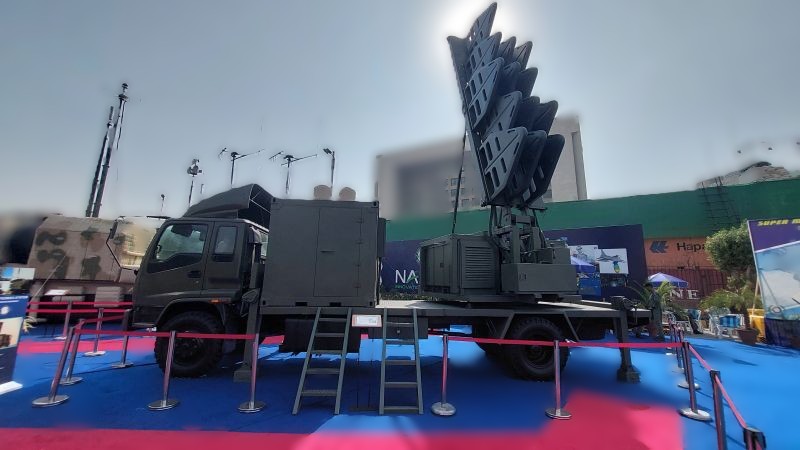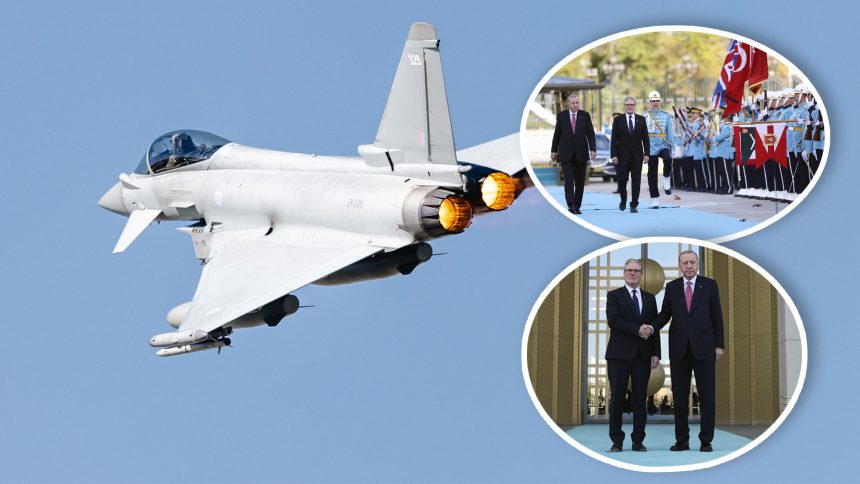In an era where unmanned aerial systems (UAS) are increasingly shaping modern warfare, the British Army has taken a proactive stance to counter these evolving threats. The recently concluded Project Vanaheim trials represent a significant milestone in the United Kingdom’s efforts to bolster its defense capabilities against hostile drones. Conducted under the British Army’s rigorous testing protocols, these trials evaluated nine advanced counter-UAS (C-UAS) platforms, each designed to detect, track, and neutralize unauthorized drones. This comprehensive initiative underscores the military’s commitment to staying ahead of adversaries leveraging UAS for reconnaissance, attack, or disruption.
The proliferation of drones, both commercial and military-grade, has transformed the battlefield. From small, off-the-shelf quadcopters to sophisticated systems capable of carrying payloads, UAS pose a multifaceted threat. They can be used for intelligence gathering, delivering explosives, or disrupting critical infrastructure. The accessibility of drone technology has lowered the barrier to entry, enabling non-state actors, including terrorist organizations, to deploy UAS with alarming ease. This dynamic has necessitated the development of robust C-UAS solutions capable of addressing a spectrum of threats, from low-cost consumer drones to high-end military systems.
The British Army, recognizing the urgency of this challenge, launched Project Vanaheim to identify and integrate cutting-edge C-UAS technologies into its operational framework. Named after the mythical Norse realm, the project symbolizes a fortified defense against aerial intrusions. The trials, conducted in a controlled yet realistic environment, aimed to assess the performance of various platforms under diverse scenarios, ensuring they meet the stringent requirements of modern military operations.
Project Vanaheim was designed to evaluate C-UAS platforms across several key performance indicators, including detection range, accuracy, response time, and interoperability with existing military systems. The trials focused on systems capable of operating in complex environments, such as urban settings or contested battlefields, where distinguishing between friendly and hostile drones is critical. The British Army sought solutions that could integrate seamlessly with its command-and-control networks, providing real-time situational awareness and rapid response capabilities.
The trials also emphasized scalability and adaptability, ensuring the selected platforms could counter both current and emerging UAS threats. With drones evolving rapidly in terms of speed, stealth, and payload capacity, the British Army prioritized systems that demonstrated flexibility and future-proofing. The evaluation process included rigorous testing of each platform’s ability to detect, track, and neutralize drones using a combination of sensors, jammers, and kinetic or non-kinetic effectors.
The Nine C-UAS Platforms Tested
While specific details about the platforms remain classified, the trials featured a diverse array of systems from leading defense contractors and technology innovators. These platforms, representing the forefront of C-UAS technology, were selected based on their potential to address the British Army’s operational needs. Below is an overview of the types of systems tested, based on publicly available information and industry trends:
- Radio Frequency (RF) Jamming Systems: These platforms disrupt the communication links between a drone and its operator, effectively neutralizing the UAS by severing its control signals. RF jammers are particularly effective against commercial drones reliant on standard communication protocols.
- Electro-Optical/Infrared (EO/IR) Sensors: Advanced sensor suites capable of detecting drones through visual and thermal signatures were a key focus. These systems excel in identifying small, low-flying drones that may evade traditional radar systems.
- Radar-Based Detection Systems: High-resolution radar systems were tested for their ability to detect drones at extended ranges, even in cluttered environments. These platforms are critical for providing early warning and tracking fast-moving or stealthy UAS.
- Laser-Based Effectors: Directed-energy weapons, such as high-energy lasers, were evaluated for their precision and ability to neutralize drones without collateral damage. These systems offer a cost-effective solution for engaging multiple targets.
- Kinetic Interceptors: Some platforms incorporated kinetic solutions, such as net-based capture systems or small munitions designed to physically disable drones. These systems are effective against larger or more resilient UAS.
- Artificial Intelligence (AI)-Driven Analytics: AI-powered platforms were tested for their ability to process data from multiple sensors, identify threats, and recommend appropriate countermeasures in real time. These systems enhance decision-making speed and accuracy.
- Electronic Warfare (EW) Suites: Advanced EW systems capable of intercepting and manipulating drone signals were evaluated. These platforms are designed to counter sophisticated military-grade UAS.
- Integrated C-UAS Ecosystems: Some systems offered a layered approach, combining detection, tracking, and neutralization capabilities into a single platform. These integrated solutions are designed for rapid deployment in dynamic operational environments.
- Mobile C-UAS Platforms: Portable or vehicle-mounted systems were tested for their ability to provide on-the-move protection for ground forces. These platforms are critical for expeditionary operations and mobile units.
Each platform was subjected to a series of simulated scenarios, including urban operations, open-field engagements, and defense of critical infrastructure. The trials assessed the systems’ performance under adverse weather conditions, electronic interference, and high-threat environments to ensure reliability and robustness.
Key Findings and Implications
The Project Vanaheim trials yielded valuable insights into the strengths and limitations of the tested C-UAS platforms. While specific results remain confidential, the British Army reported that the trials successfully identified systems capable of addressing a wide range of UAS threats. Key findings included:
- Interoperability: Systems that integrated seamlessly with existing military networks demonstrated superior performance, enabling faster decision-making and coordinated responses.
- Detection Accuracy: Platforms with advanced sensor fusion, combining radar, EO/IR, and RF detection, proved highly effective in distinguishing hostile drones from benign objects, reducing false positives.
- Neutralization Efficiency: Non-kinetic solutions, such as RF jamming and laser-based effectors, showed promise in minimizing collateral damage, making them suitable for urban and civilian environments.
- Scalability: Modular systems that could be upgraded to counter emerging threats were prioritized, ensuring long-term relevance in a rapidly evolving threat landscape.
The trials also highlighted the importance of human-machine teaming, with AI-driven analytics playing a critical role in processing complex data sets and providing actionable intelligence. The British Army emphasized the need for systems that balance automation with human oversight, ensuring ethical and effective decision-making in high-stakes scenarios.
Strategic Importance for the British Army
Project Vanaheim is a cornerstone of the British Army’s broader modernization strategy, which seeks to enhance its capabilities in response to evolving global threats. The rise of UAS has introduced new challenges to traditional defense paradigms, requiring innovative solutions to protect troops, assets, and civilian infrastructure. By investing in advanced C-UAS technologies, the British Army aims to maintain a strategic edge in contested environments, whether in homeland defense or expeditionary operations.
The trials also reflect the UK’s commitment to fostering collaboration with industry partners. By engaging with leading defense contractors and emerging technology firms, the British Army is leveraging cutting-edge innovations to address its operational needs. This partnership model ensures that the selected C-UAS platforms are not only technologically advanced but also cost-effective and scalable.
The British Army’s focus on C-UAS capabilities aligns with global trends in military modernization. Nations worldwide are grappling with the challenges posed by drones, with many investing heavily in counter-drone technologies. The US, for instance, has deployed C-UAS systems in various theaters, while NATO allies are collaborating on joint defense initiatives to address the UAS threat. Project Vanaheim positions the UK as a leader in this domain, setting a benchmark for other nations to follow.
Looking ahead, the British Army plans to integrate the most promising C-UAS platforms into its operational framework, with procurement decisions expected in the near future. The lessons learned from Project Vanaheim will inform the development of future C-UAS strategies, ensuring that the UK remains prepared for the next generation of aerial threats. Additionally, the trials have paved the way for further research and development, with a focus on enhancing AI-driven analytics, improving sensor integration, and exploring novel neutralization methods.
Conclusion
Project Vanaheim represents a critical step in the British Army’s efforts to counter the growing threat of unmanned aerial systems. By rigorously testing nine advanced C-UAS platforms, the trials have demonstrated the UK’s commitment to innovation, interoperability, and operational readiness. As drones continue to evolve, the insights gained from these trials will shape the future of the British Army’s defense capabilities, ensuring it remains equipped to protect national security in an increasingly complex threat environment. The success of Project Vanaheim underscores the importance of proactive investment in cutting-edge technologies, positioning the UK as a global leader in counter-drone defense.




